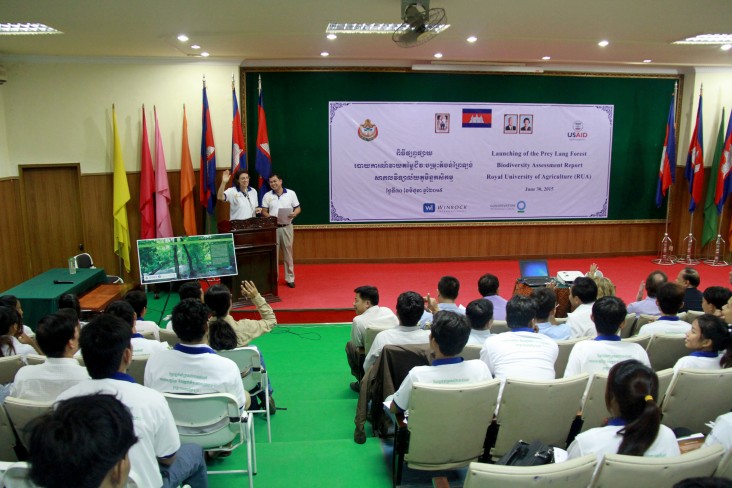
Your Excellency, Dr. Chheng Kimsun, Delegate of the Royal Government of Cambodia and Head of the Forestry Administration
Distinguished guests, ladies, and gentlemen
It is my great pleasure to see all of you here today for the “Launch of the Prey Lang Landscape Biodiversity Assessment Report.” Protecting Cambodia’s natural resources is a priority for the U.S. government and we are proud to have supported this important initiative.
USAID works closely with the Cambodian government to preserve and sustainably manage its forests and rich biodiversity. Our Supporting Forests and Biodiversity Project, which funds this Biodiversity Assessment, is one of the main ways that we do this.
The Prey Lang Forest is an important biodiversity hotspot and the largest lowland evergreen forest in Cambodia. It provides crucial habitat for a diversity of endangered flora and fauna species, some of which are only found in Cambodia. The forest provides more than 100 forest communities with an array of renewable non-timber forest products, including resin, rattan, mushrooms, and honey. It is important, too, for us to recognize the hydrological value of Prey Lang Forest because it is a significant watershed for the Tonle Sap Lake.
The forests of Prey Lang reduce the flow of sediment into this critical fishery zone. They contribute to flood control in the peak rainy season. They are also believed to make a major contribution to the regulation of underground water in the dry season.
But the Prey Lang Forest is under intense pressure from a variety of legal and illegal activities. These threats include economic land concessions, mining concessions, illegal logging, and significant wildlife poaching. The intensive logging is changing the forest’s composition and structure, its ecosystems, its microclimate, and increasing waterway sedimentation.
Not only does this deforestation have local implications like reducing the breeding habitat and shelter for aquatic species but, if unchecked, it will have serious cumulative downstream impacts.
Caring for the environment, protecting biodiversity, and conserving the country’s natural resources is a priority for us. This is why USAID worked closely with Cambodia’s Forestry Administration, through Conservation International, to conduct this Prey Lang Landscape Biodiversity Assessment. The findings are very impressive and important for the conservation of the Prey Lang Forest.
Conservation International also published a colorful abbreviated version with lots of beautiful pictures. At USAID, we are sharing this wonderful document with our visitors and partners.
The technical report and the booklet are presented here today and we have placed them online so you can download them. Downloading them online will save paper and reduce the need to cut trees!
In closing, let me reiterate that helping Cambodia conserve the Prey Lang forest is a priority for the U.S. government. Protecting this amazing ecosystem means that future generations will not only appreciate its beauty but benefit from its critical contributions to the circle of life in Cambodia.
We sincerely appreciate the excellent work of the Winrock International and Conservation International. We would also like to recognize the support we have received from His Excellency Chheng Kimsun to distribute this report to the Cambodian people.
Thank you.
Related Speeches
- 6th Mara Day Celebration - Remarks by Brad Arsenault, Deputy Director for East Africa and Operations, Environment Office, USAID Kenya and East Africa
- Remarks by Ms. Polly Dunford, Mission Director, USAID Cambodia, Handover of Forest Community Patrol Equipment
- Remarks by Menglim Kim, Project Management Specialist, USAID Cambodia, National Reflection and Learning Meeting Sub-National Authority and Community Engagement for Improved Natural Resource Governance and Practices







Comment
Make a general inquiry or suggest an improvement.